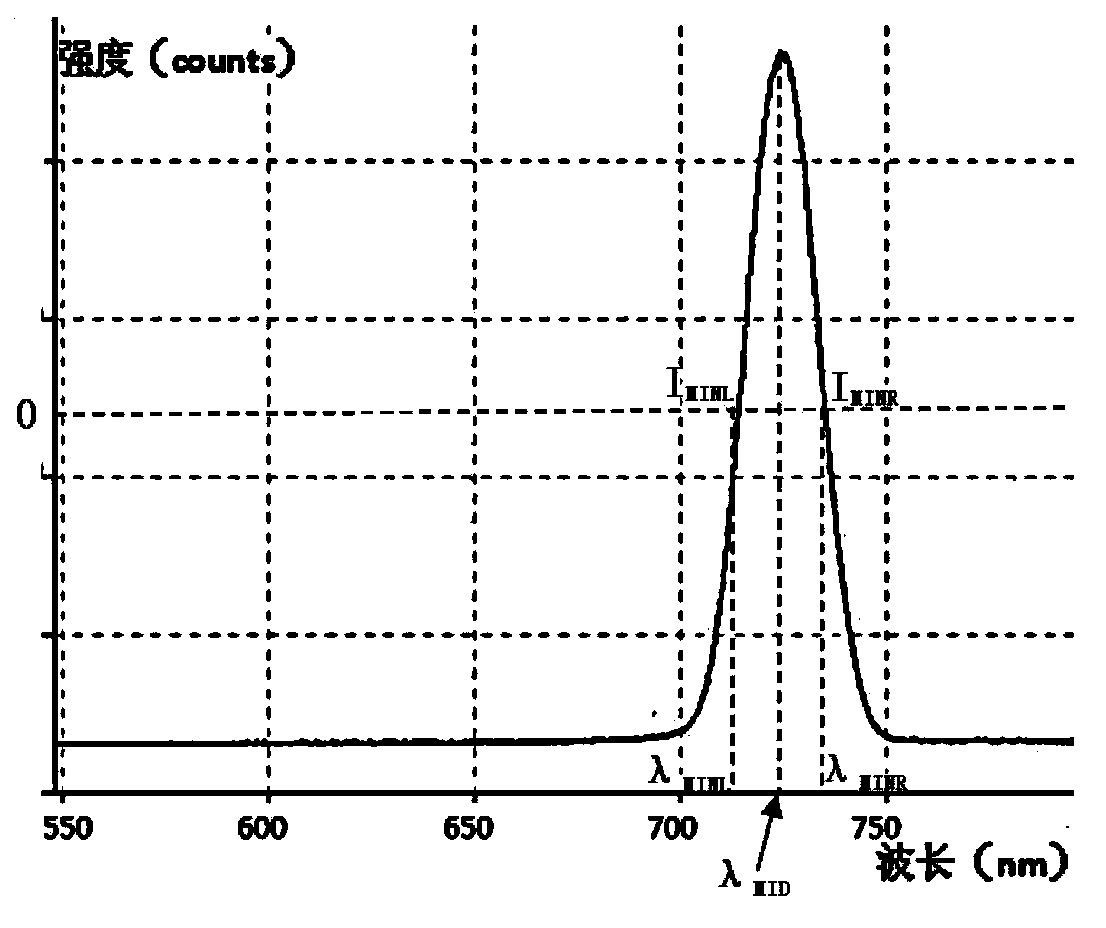Spectrograph-based optical displacement sensor signal demodulation method
A displacement sensor and signal demodulation technology, used in instruments, optical devices, measuring devices, etc., can solve the problems of incident light incident angle deviation, erroneous displacement information, increasing difficulty in calculation and solution, and eliminate processing and assembly errors. , the effect of improving calculation accuracy and shortening data processing time
- Summary
- Abstract
- Description
- Claims
- Application Information
AI Technical Summary
Problems solved by technology
Method used
Image
Examples
Embodiment
[0025] Step 1: The optical displacement sensor outputs a narrow-band diffracted light signal to the spectrometer;
[0026] Step 2: The spectrometer selects the HR4000 type of Haiyang Company to read the spectral information of the narrow-band diffracted light;
[0027] Step 3: The spectrometer inputs the corresponding array data of wavelength λ and light intensity I in the spectral information to the computer. The corresponding arrays of wavelength λ and light intensity I are two arrays containing 3648 values. The typical corresponding relationship is as follows figure 2 shown;
[0028] Step 4: The computer processes the corresponding array data of the wavelength λ and the light intensity I by using the half-height width method, and obtains the central wavelength λ of the narrow-band diffracted light 0 . First use the point-by-point comparison method to obtain the maximum value I of the light intensity I MAX , its light intensity value is 9144; after that, the correspondin...
PUM
 Login to View More
Login to View More Abstract
Description
Claims
Application Information
 Login to View More
Login to View More - R&D
- Intellectual Property
- Life Sciences
- Materials
- Tech Scout
- Unparalleled Data Quality
- Higher Quality Content
- 60% Fewer Hallucinations
Browse by: Latest US Patents, China's latest patents, Technical Efficacy Thesaurus, Application Domain, Technology Topic, Popular Technical Reports.
© 2025 PatSnap. All rights reserved.Legal|Privacy policy|Modern Slavery Act Transparency Statement|Sitemap|About US| Contact US: help@patsnap.com



